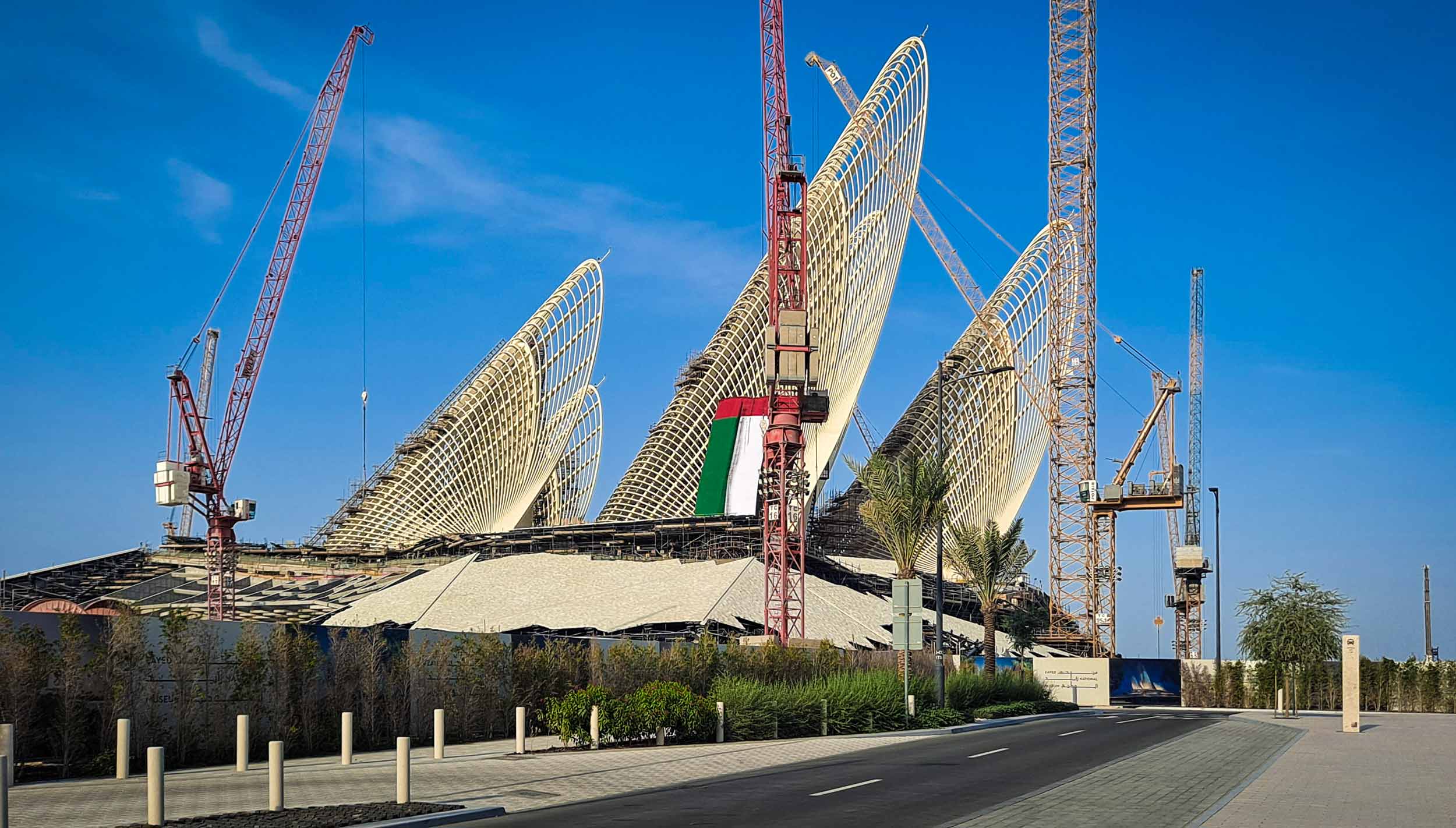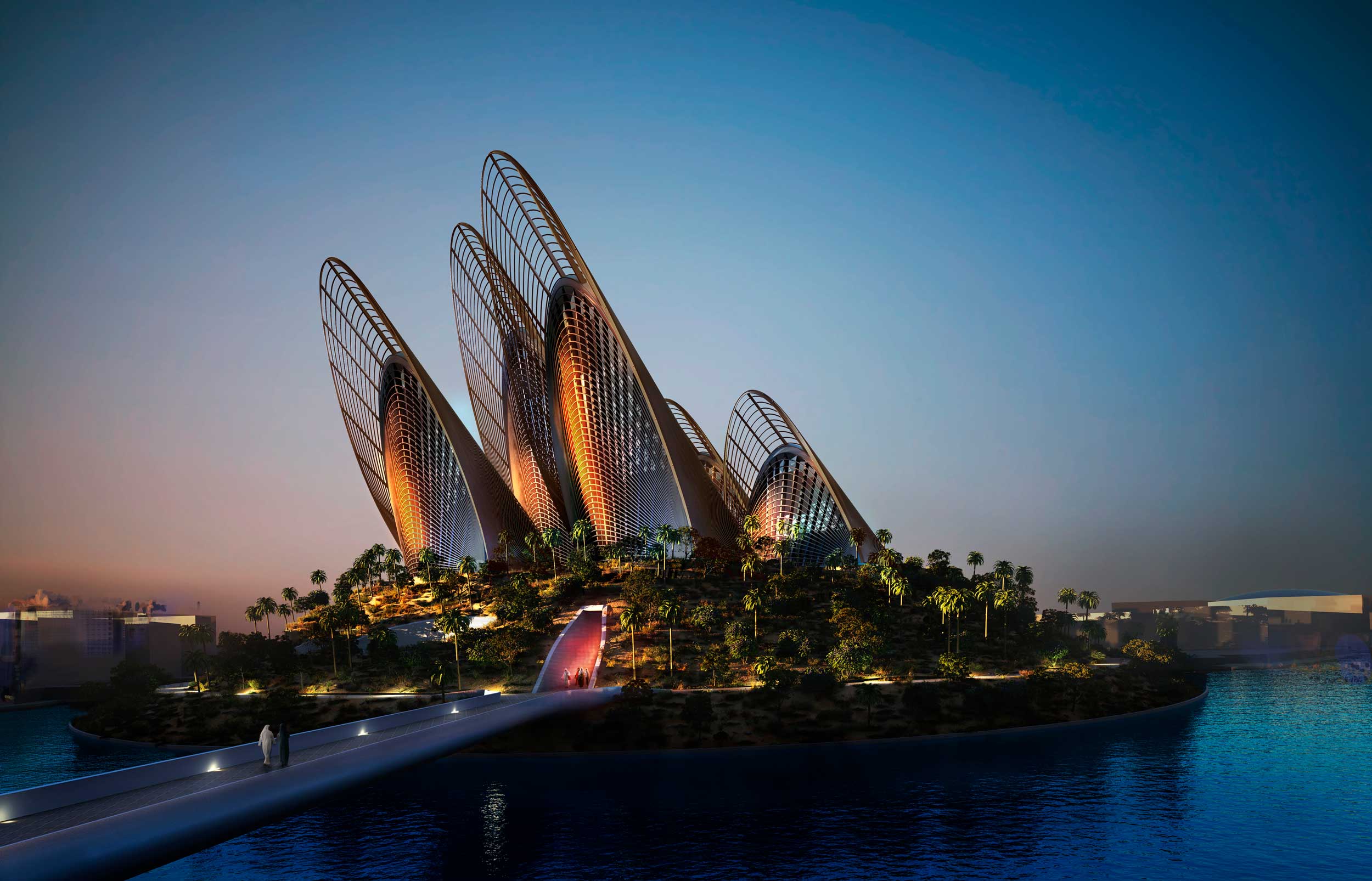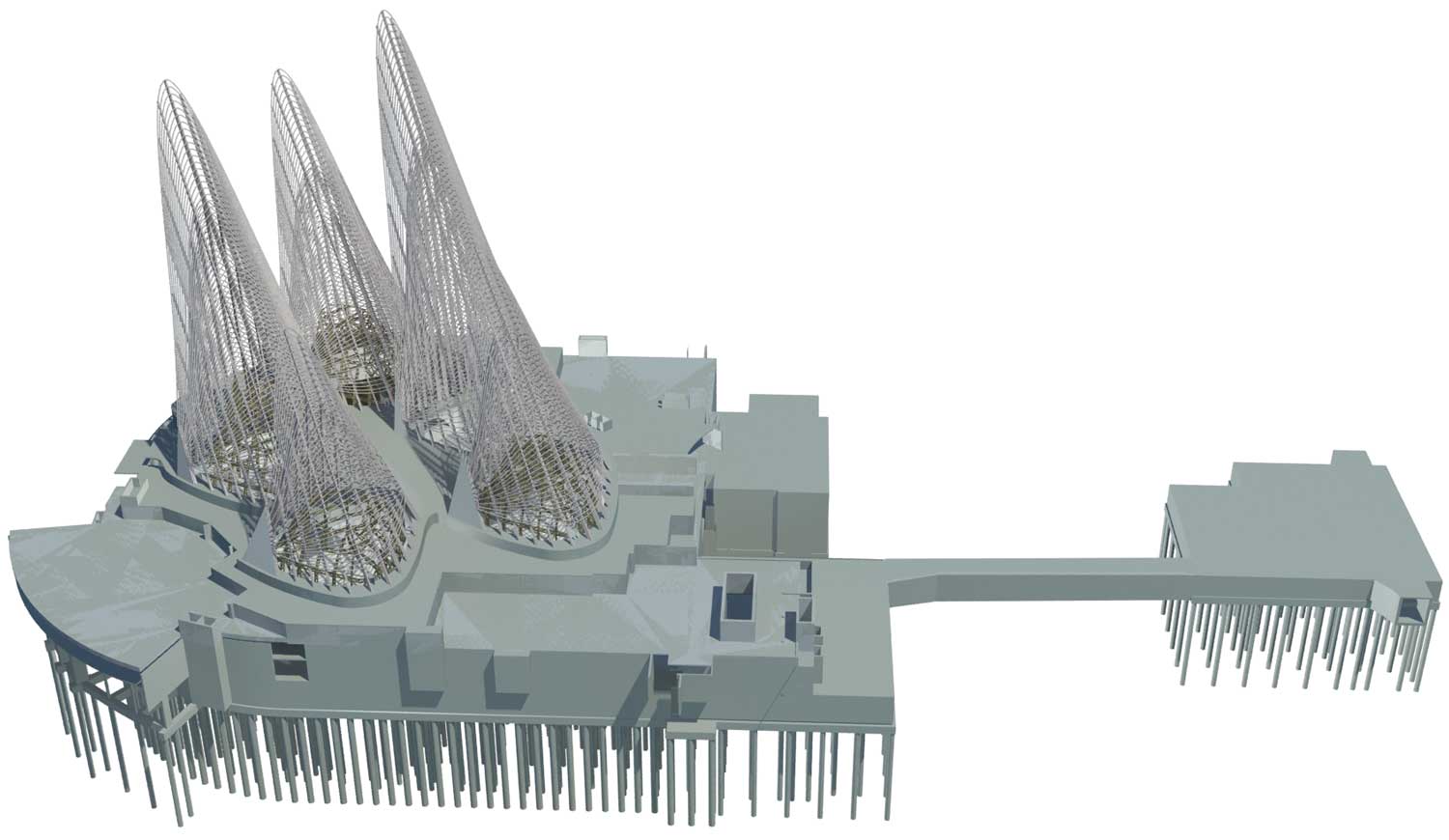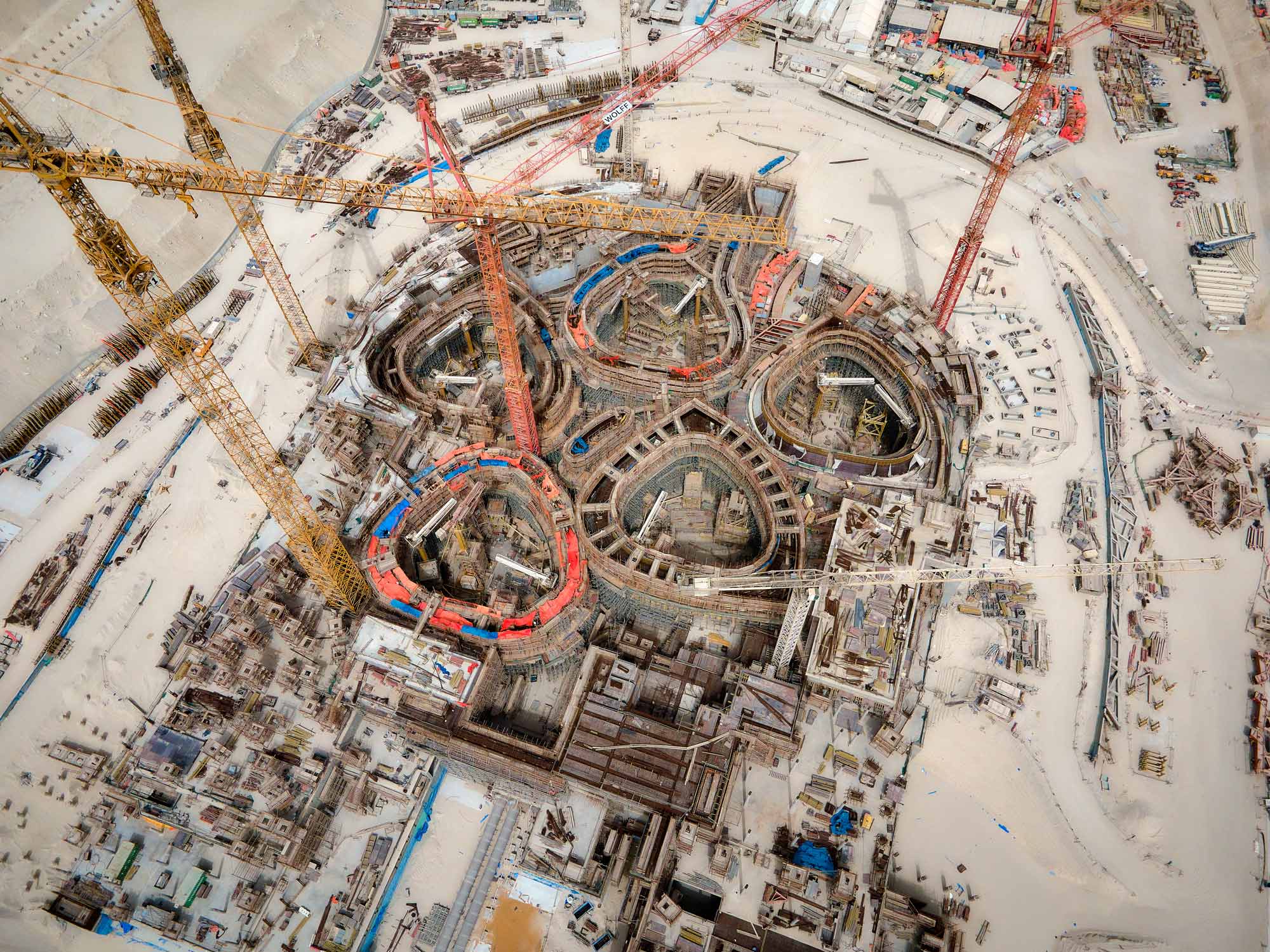
Situated in the heart of Abu Dhabi’s new cultural district on Saadiyat Island to the north-east of the capital, the five ‘wings’ of Foster + Partners’ Zayed National Museum – a metaphor for the former leader’s love of falconry – soar over the palm trees clustered around its landscaped dome.
Pioneering new museum in Abu Dhabi with engineered vertical ‘wings’ and a domed structure.
These prominent steel structures alone may appear complex, but the points of intersection between the various systems lie beneath the artificial mound that conceals the concrete podium’s existence. Several galleries alongside five hanging 2,000 m² gallery pods encircle the main lobby area in celebration of Sheikh Zayed and the UAE.

Aesthetically, the aim was to combine contemporary architecture with the curves and swirls of traditional Arabic design. We enlisted our complex geometry team to aid the design of the free-form wings in particular, manipulating the form using a range of parameters to produce an optimised structure, which maximised its aerodynamic stability and pinpointed areas of weakness. Fabricated steel sections were placed vertically to shape the frames, connected to the circular hollow sections which formed the curved arches.
In a practical sense, all elements of the building were centred on the need to efficiently provide daylight and cooling in a harsh, arid environment. The wings each serve a separate gallery pod below, but there is no direct connection, allowing a free zone around the circumference through which light can pass. The arches and columns of the podium are carefully moulded to direct the sunlight, providing areas of shade and illumination.
An innovative air conditioning system also makes use of the ground temperature, drawing fresh air through ground-cooling pipes and then releasing them into the museum’s lobby. As the steel heats up in the sun, the wings begin to act as thermal chimneys and a passive stack effect draws the air currents up through the building.

